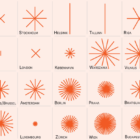Editor's Pick
Editor’s Pick: 2021’s Best Investigative Stories from Latin America
|
Despite a backlash against the media in Latin America, investigative journalists have refused to stay silent. Here we highlight eight of the best investigative stories published in Spanish in the region this year, selecting those that prioritized collaboration, used innovative investigative methods and tools, and those that reached new audiences.









